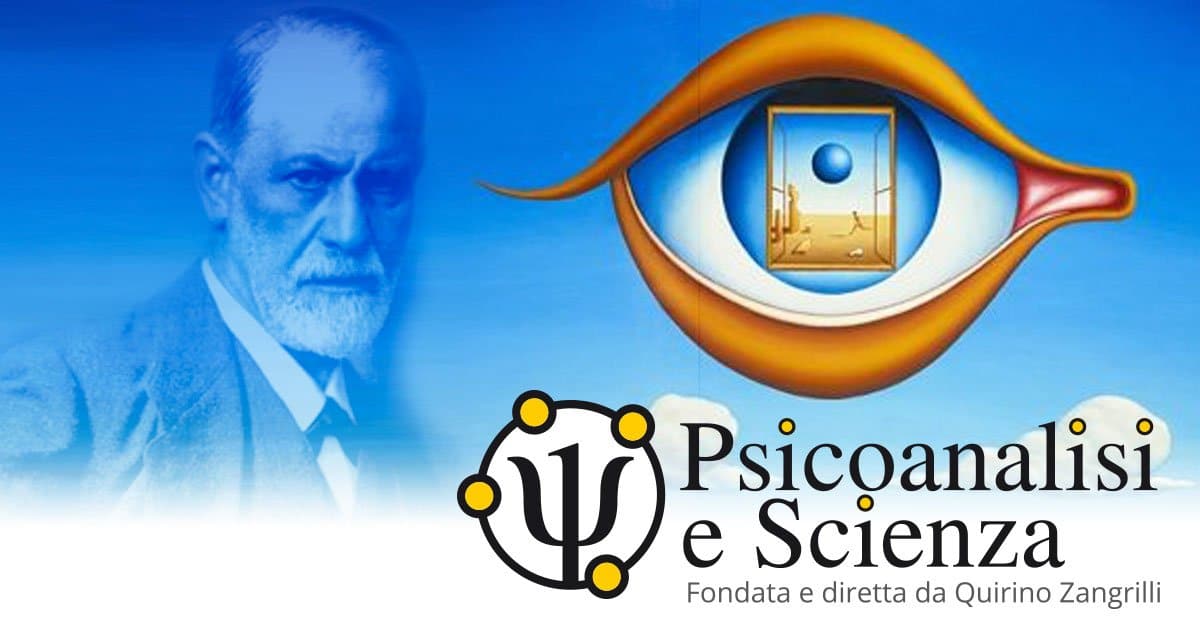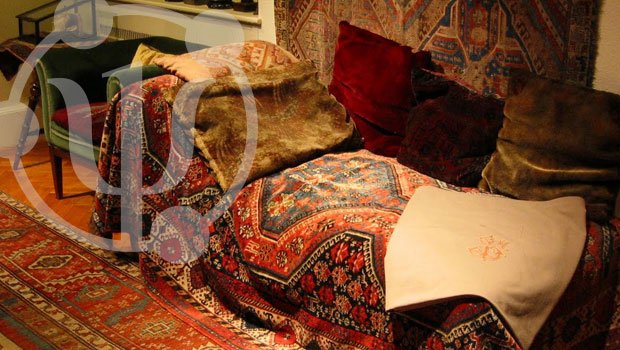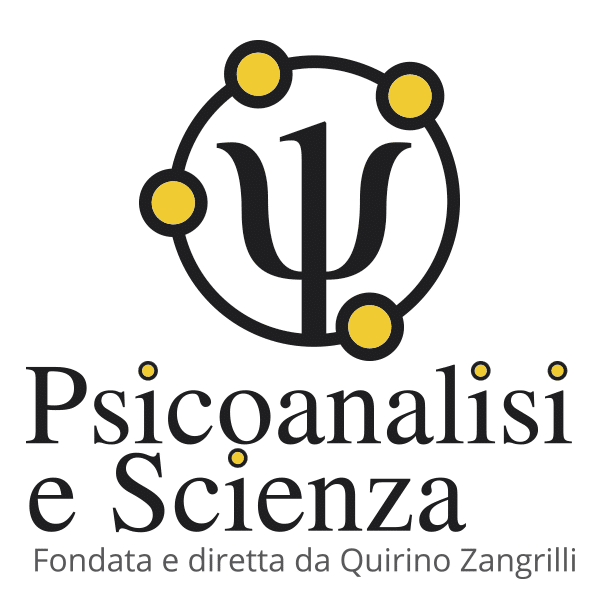Intrauterine Trauma and Alcoholomania
The present work was published in the 4th number of the “Bollettino dell’Istituto Italiano di Micropsicoanalisi”, first semester, 1987.
The conscious assumption of any substance which is capable of promoting a modification of the psychic and/or somatic balance of the organism (drugs) always corresponds to a deep situation which goes much further than a symptomatic or painful state.
In the article “The Case of Sara”, I have attempted to demonstrate how the assumption of opiates corresponds to the necessity of neutralising anxieties tied to precocious traumatic vicissitudes of rejection of an intrauterine origin.
I will now try to analyse the nature of the traumatic nucleus which feeds the appetency for alcohol. It is interesting above all to remember some of the pharmacological effects of alcohol.
It provides 7 calories per gram, compared to 9 provided by fats and 4 provided by proteins and carbohydrates: “The Alcoholics probably get all the calories they need form alcohol” (D.R. Laurence, Farmacologia Clinica, 1968). It provokes furthermore the peripheral vasodilatation lowering the vasomotor centre and this explains the sensation of heat which is felt after its assumption. On the other hand, the same peripheral vasodilatation causes an increase of the dispersion of heat through the body’s surface with the consequent decrease of the body temperature: therefore, after the transitory sensation of heat, follows a final cold feeling.
For those suffering from an asthmatic state, alcohol is recommended as a sedative because it does not depress the respiration in therapeutic doses and it can also have a certain bronco-dilator effect. In synthesis, with the first assumption, a dose of alcohol determines a feeling of internal heat, an initial sedation and a light improvement of the respiratory function: it is this sensation of “warm calmness” which the alcoholic looks for.
During the course of any interview with alcoholics, systematically expressions such as “an intolerable sensation of internal cold”, “invincible frost”, “ice in the heart” are heard, which, in my opinion, are not only used to describe a psychological experience but also constitute the compulsive recourse or, better still, the image of a real psychosomatic situation.
I want to effectively sustain that a real situation of sudden variation of the body temperature, respiratory difficulties and energetic deprivation, must have effectively produced themselves, at a certain point , during the lives of these people.
In an interesting work published in 1929, Ferenczi takes in to consideration three clinical cases (two of bronchial asthma and one of alcoholism in a young woman) and hypothesises that their etiopathogenesis is caused by the fact that they are “undesired family guests”: “…everything makes us believe that these children had perceived the conscious or unconscious signs, with which their mothers showed their refusal or their impatience towards them, and for this reason a rift in their will to live had been produced”.
In his work “Cold, Illness and Birth”, Ernest Jones is even more explicit: “After the pain of the birth, the sensation of cold air which the newborn feels is certainly the most relevant demonstration of the ‘castration’ that it has suffered (since it has been deprived of its nest that it previously considered as part of its own totality). The unpleasant stimulation that this change of temperature produces completely disrupts its way of behaving and it is from this (involuntary) reaction that all its life depends”.
At this point it is evident that the accent that Fernczi and above all Jones place on the somatic side of the vicissitude has a parallel psychic aspect; so I formulate the hypothesis that these undesired children kept in life during the pregnancy due to a narcissistic investment by the mother (even though conflicting), after the birth are deprived of that vital energetic flow which is the libido. Furthermore, it is common sense that every human being which comes into the world passes from an environment in which the temperature is maintained constant, the uterus, into one in which it is not possible. Nevertheless, not all present the stigmas of which Jones reminded us.
It is my opinion, therefore, that the trauma determined by the brusque variation of the temperature must have happened during the gestation period and that the ulterior inevitable variation of the temperature of the first moments of post-natal life can offer the possibility of binding the quantum of uncontrollable excitation determined by these intrauterine traumas to an external situation.
In the foetus, the hypothalamic thermoregulatory centres are still immature and it behaves all in all as a heterothermal animal: in other words, its capability of adapting to the variations in the environmental temperature totally depends on the maternal responses.
Even at birth the thermoregulatory mechanisms do not work and the newborn lacks the shiver phenomenon. For this reason and for the high ratio existing between the surface and the body mass the newborn is particularly exposed to the lowering of the body temperature.
It is very probable that these children have not only been abandoned for a considerable period of time after the birth, but have also undergone repeated and unsuccessful attempts of rejection which have been ultimately resolved in this sequence: uterine contractions – placental hypoxia – foetal hypothermia.
The appetency for alcohol is favoured for its transitory pharmacological actions: the feeling of warmth and the improvement of the respiratory function; it is, in other words, a failed attempt of repairing both aspects of the intrauterine trauma: hypothermia and hypoxia.
To illustrate my reflections better, I will use the material taken from the micropsychoanalysis of a young woman who had come into psychoanalysis because of a severe paranoid syndrome but who soon also revealed a tenacious alcoholomania. It is important to specify that the woman was an adoptive child, adopted at the age of one year, who ignored the identity of her biological parents and who had had the same destiny as many other adopted children: the impossibility of harmonising her psychic ground (constituted by the phylogenetic images) with that of her adoptive parents, with the final structuring of a consequent and permanent experience of rejection.
The initial phase of the micropsychoanalytic work was all focused on the strengthening of the primary defence mechanisms. We could say that in the process of the Ego building which is accomplished primarily for the projection of internal phylogenetic objects, these had not been able to find asylum in the adoptive family environment. The patient had, therefore, intensively resorted to the identification-projection, but interacting with an absent or falsely present environment she had filled her Ego with persecutory objects resigning herself to live in a dimension of empty limbo without having the possibility of elaborating the detachment from her mother, nor least of all that of a phantasmal reconstruction of the primary narcissism. For all the first part of the work, I had been careful not to touch that symptomatic behaviour that was, paradoxically, the only reaction which allowed her a precarious balance: the alcoholomania.
Only when her Ego was sufficiently strengthened I allowed her to dedicate herself to analysing her appetency for alcohol. The patient began, systematically, to attack her traumatic nucleus after a session in which, overcoming her resistances, began that difficult work of acquainting herself with the constitutive Void that is the cornerstone of each micropsychoanalysis: “I feel cold, an absolute and total cold; but when I touch this cold I feel within myself the spark of life once again… but there is a part of me that does not want to stop drinking. If, at least, I had someone to hold me tight, to warm me… every time I turned to look at my mother (adoptive) I found her glare of ice: I feel as if I have always walked alone, alone in the universe… it will be sufficient to accustom myself to this Void and to realise that you can’t fall into it. In this moment I feel a strange warmth that rises from my stomach, a warmth that fills me, the same warmth that I look for when drinking, but this time it is a natural warmth!”. During the following sessions she began, for the first time in her life, to take into consideration the idea of tracking down her biological parents and soon after she actively began the research, managing to make contact with her mother and recognising her as her own mother.
This event allowed her to confront and drench herself with the phylogenetic images of the maternal branch which, previously, appeared to her as estranged and persecutory.
Here is the material produced after the meeting with her mother: “Yesterday I truly had the feeling that I was weaning myself off alcohol: finally I felt free from the need to drink, I am happy to have found her again, happy that she had accepted me and happy to find out that she had kept a photo of me in her purse… I was about to say something absurd: I am happy to have a mother too. Now I feel warm and happy”.
Effectively, this meeting marked e decisive step in her micropsychoanalytic work (and I want to underline that the fundamental meeting is always the unconscious one, on the images level) and she re-examined her traumatic nucleus several times: “The closer I become to liberty the more I tremble like a newborn in its crib, alone, still wet and waiting to be dried and warmed (this material makes one think that the primary trauma had been repeated successively during the course of her primary childhood every time that she, as a newborn waited wet, to be changed) … in the presence of a cub I always play a strange game: I concentrate on transmitting it love and warmth until it no longer trembles (this is the libido investment: an energetic transmission from one system to another). If I am outside myself it is as if I lack my skin, my protection; if I stay inside myself I feel as though I am suffocating and so I stay very still. I always feel as though someone wants to get rid of me before time… a cold vice which squeezes me and sends me away; I want to grasp on to something but that body sends me away and I feel cold and skinned alive. The rage we carry inside is that of being born against our will and it is to mitigate this rage that we smoke, drink and drug ourselves”.
To conclude, I can affirm that the alcoholomania finds a more fertile ground of development in subjects who have experimented traumatic vicissitudes of intrauterine rejection, in which the foetus’s psychosomatic discomfort is expressed above all in the binomial hypoxia-hypothermia.
In the case expounded, the same biological mother confirmed the patient’s experience, admitting that she had undergone, without success, an abortion. The compulsive attempt to repair the primary narcissism is reinforced by the pharmacological action of the alcohol, through its transitory and illusory capability of giving a second skin through the peripheral vasodilatation and initial sedation. The dispersion of heat which follows, however, once again determines a feeling of cold, re-establishing the primary traumatic experience: a perfect example of the power of the compulsion to repeat.
Nel 2024 riceve il Premio Accademico d’Onore della Accademia Culturale Internazionale Cartagine 2.0.
Nel 2024 docente ad Almaty – Kazakhstan presso il workshop di psicoanalisi sul tema della violenza, promosso dall’Università di psicoanalisi di Mosca in collaborazione con l’Istituto svizzero di micropsicoanalisi.
Doctor Quirino Zangrilli was born in Fiuggi in 1955. Graduated with honours in Medicine and Surgery in 1980, he practices Psychoanalysis, with intensive method, since 1982. He is author of 72 scientific pubblications. He has attended as speaker or president of session to many national and international scientific Conventions. His book “La vita:involucro vuoto” (Life: empty involucre), published by Borla in 1993, has been in use by the Chair of Dynamic Psychology at Turin’s University since 1994. He is the author and founder of the multimedia review “Psicoanalisi e Scienza” (Psychoanalysis and Science), the most read Italian on line review of psychoanalysis. In 2012 he participated as a Speaker at the Scientific Festival of BergamoScienza. In 2013 he illustrated his research on the maternal-fetal interaction in the Special Session of the XI World Congress of Perinatal Medicine in Moscow with his relation “Intrauterine Imprinting”. He is visiting teacher at Moscow Institute of psychoanalysis and training psychoanalist of Swiss Institute of Micropsychoanalysis.
In 2024 he is a teacher in Almaty – Kazakhstan at the psychoanalysis workshop on the topic of violence, promoted by the Moscow University of Psychoanalysis in collaboration with the Swiss Institute of Micropsychoanalysis.
In 2024 he received the Honorary Academic Award of the Carthage 2.0 International Cultural Academy
Le Le Docteur Quirino Zangrilli est né à Fiuggi en 1955. Diplômé avec mention en Médecine et Chirurgie en 1980, il pratique la psychanalyse depuis 1982, en utilisant une technique intensive. Il est l’auteur de 72 livres et publications scientifiques. Il a participé en tant que conférencier ou président de session à de nombreuses conférences scientifiques nationales et internationales. Son livre “La vie : enveloppe vide”, publié par Borla en 1993, est adopté depuis 1994 par la Chaire de Psychologie Dynamique de l’Université de Turin. En 1994, il a reçu le “Prix national Ciociaria de médecine”. Il a conçu et fondé le magazine multimédia “Psicoanalisi e Scienza”, qui est le magazine de psychanalyse en ligne en italien le plus suivi au monde. (Source : Entireweb, Alexa, Google, Virgilio, Arianna., etc.). En 2012, il a participé en tant que conférencier à la colloque scientifique de BergamoScienza. En 2013, il a exposé ses études sur l’interaction materno-fœtale lors de la session spéciale du XIe Congrès mondial de médecine périnatale à Moscou avec le rapport “Intrauterine Imprinting”. Il est chargé d’enseignement au cours de spécialisation de trois ans en psychanalyse, psychothérapie psychanalytique et consultation psychanalytique à l’Université de Moscou. Il est membre didacticien de l’Institut Suisse de Micropsychanalyse et de la Commission pour la Pratique de celui-ci.
En 2024, il enseigne à Almaty – Kazakhstan à l’atelier de psychanalyse sur le thème de la violence, promu par l’Université de Psychanalyse de Moscou en collaboration avec l’Institut Suisse de Micropsychanalyse.
En 2024, il reçoit le Prix Académique Honoraire de l’Académie Culturelle Internationale Carthage 2.0.
В 2024 году является преподавателем в Алматы – Казахстан на семинаре по психоанализу на тему насилия, проводимом Московским университетом психоанализа в сотрудничестве со Швейцарским институтом микропсихоанализа.
В 2024 был награжден Почетной академической премией Академии Международной Культуры «Карфаген 2.0».







